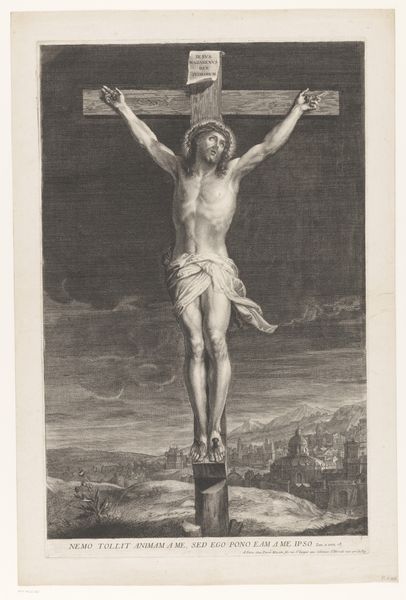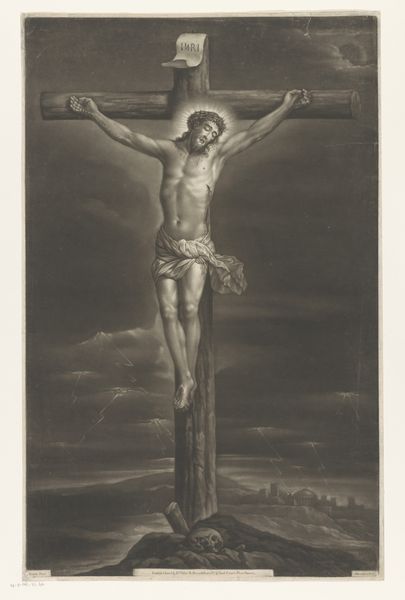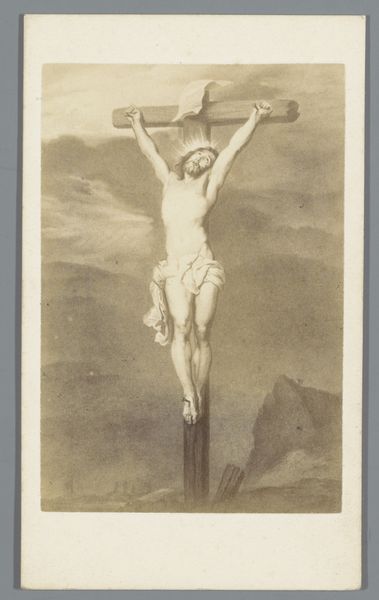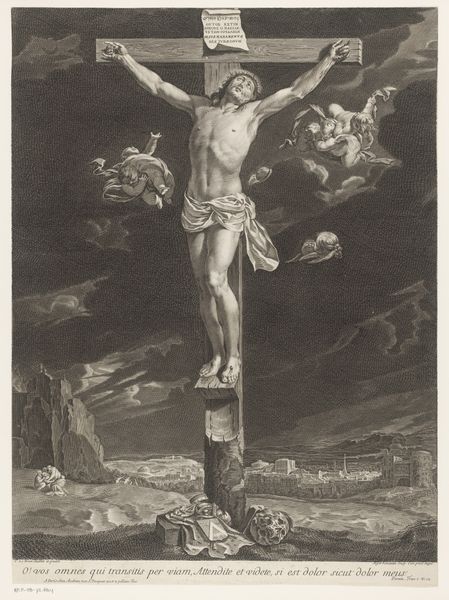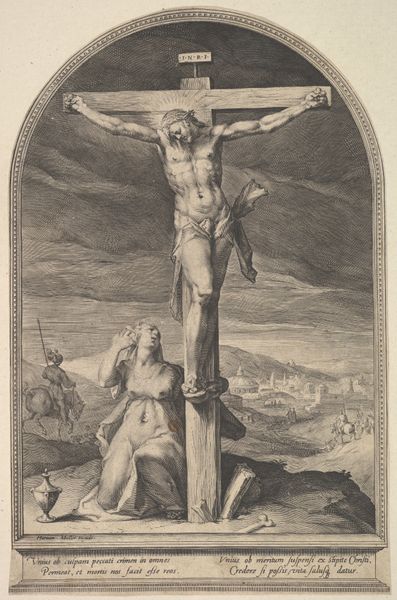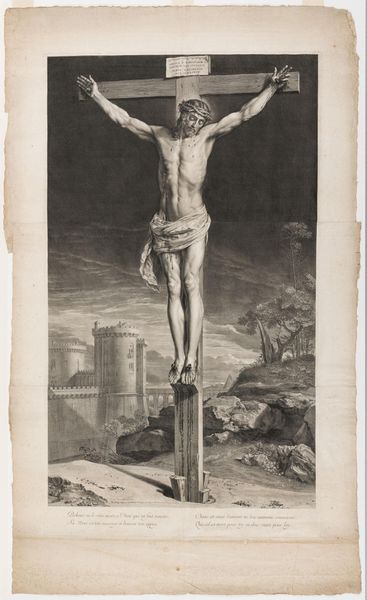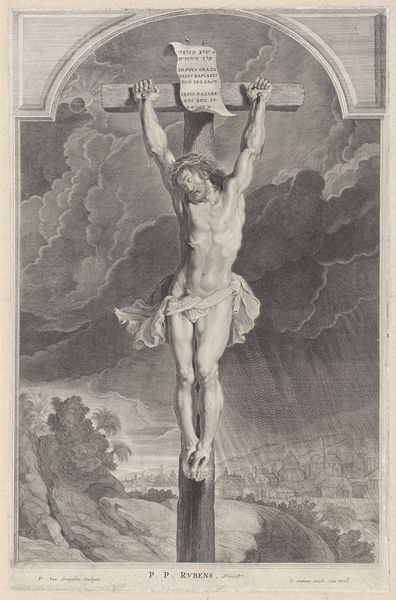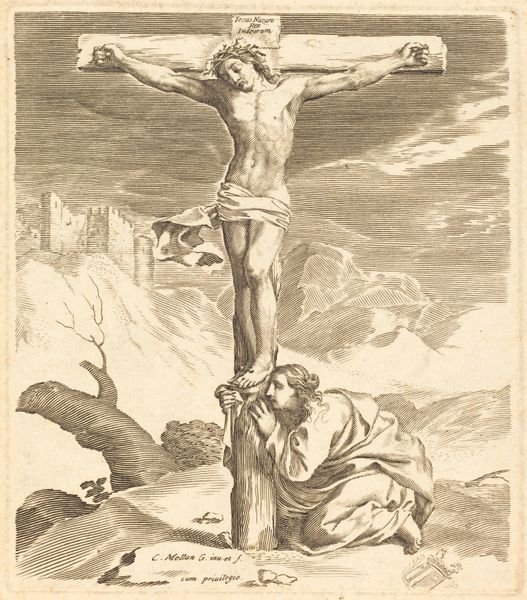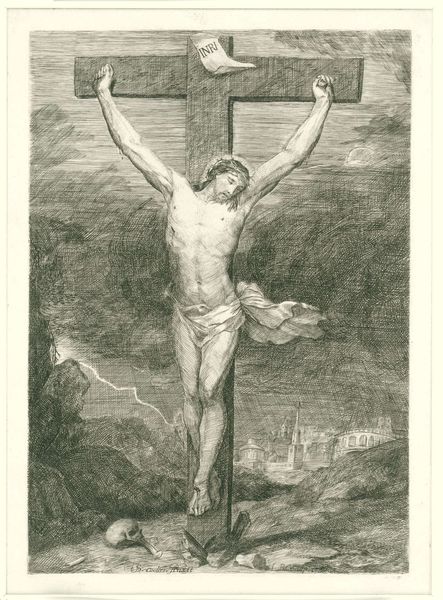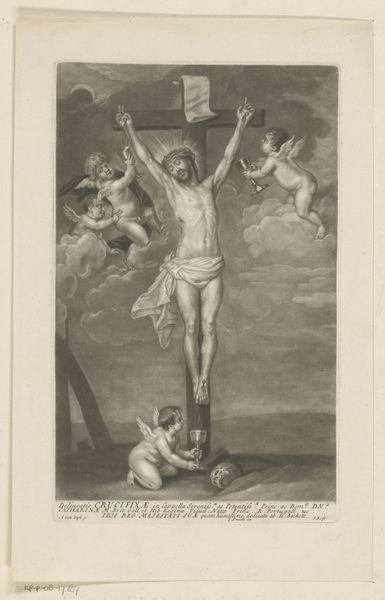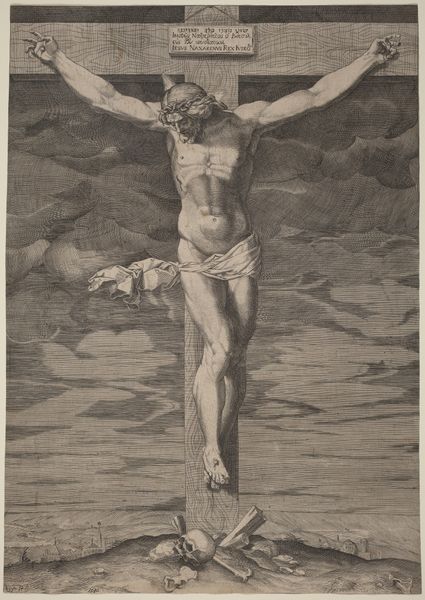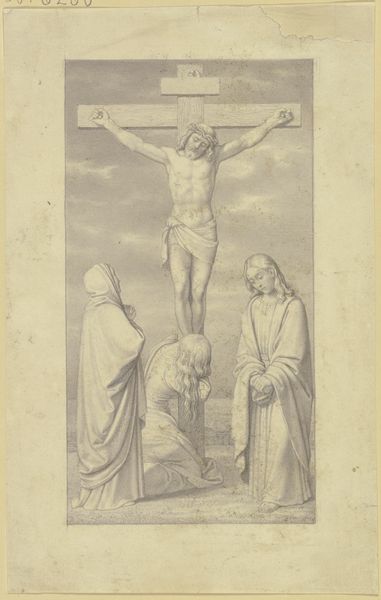
Christ crucified on the cross, a skull at the base, buildings in the background, after Reni 1765 - 1803
0:00
0:00
Dimensions: Sheet (Trimmed): 20 1/16 × 13 1/4 in. (51 × 33.6 cm)
Copyright: Public Domain
Curator: It’s stark, isn’t it? Almost monochromatic. And vast – that sky looms so heavy. Editor: Indeed. What we’re observing is an engraving titled "Christ crucified on the cross, a skull at the base, buildings in the background, after Reni," created sometime between 1765 and 1803 by Giovanni Volpato. It’s currently held at the Metropolitan Museum of Art. It appears to be after Guido Reni's interpretation of the crucifixion. Curator: The skull. Always the memento mori. In visual language, it's shorthand, isn't it, for accepting death as inevitable? And juxtaposed like that, almost casually beneath the cross...powerful. Editor: Absolutely. Consider the cultural and religious context: engravings like this circulated widely, reinforcing both the literal and symbolic narratives of Christ's sacrifice. Volpato would have been shrewd enough to realize prints make powerful religious and political messaging. And that architecture faintly in the background...a statement on societal indifference? Curator: Perhaps, or a statement about permanence. I'm drawn to the inscription at the bottom, it seems significant. The frailty of flesh against those stark architectural shapes gives us a contrast between fleeting life and potentially enduring structures. The cross itself stands as both. Editor: You're referring to “In manus tuas commendo spiritum meum." "Into your hands I commend my spirit"—Christ's final words, loaded with theological weight, influencing how we understand this suffering as transformative, redeemable. It makes this much more than simply "history painting"; we see evidence of that tradition but applied with contemporary messaging and the printing press to take hold of a different level of audience in an increasingly unstable world. Curator: The artistic decision to flatten perspective actually intensifies the focus on the spiritual element for me. This isn't about realistic depiction; it's about communicating a specific, coded experience of loss and ultimate faith. See how the eye gets drawn toward the body and the halo but then returns to the skull to take on the gravity of our existence. Editor: And its legacy continues; imagery from the time resonates even today in contemporary interpretations, influencing modern concepts of morality and societal ethics. A piece to contemplate further. Curator: Indeed, it offers so much depth upon repeated viewings and in varied contexts.
Comments
No comments
Be the first to comment and join the conversation on the ultimate creative platform.

